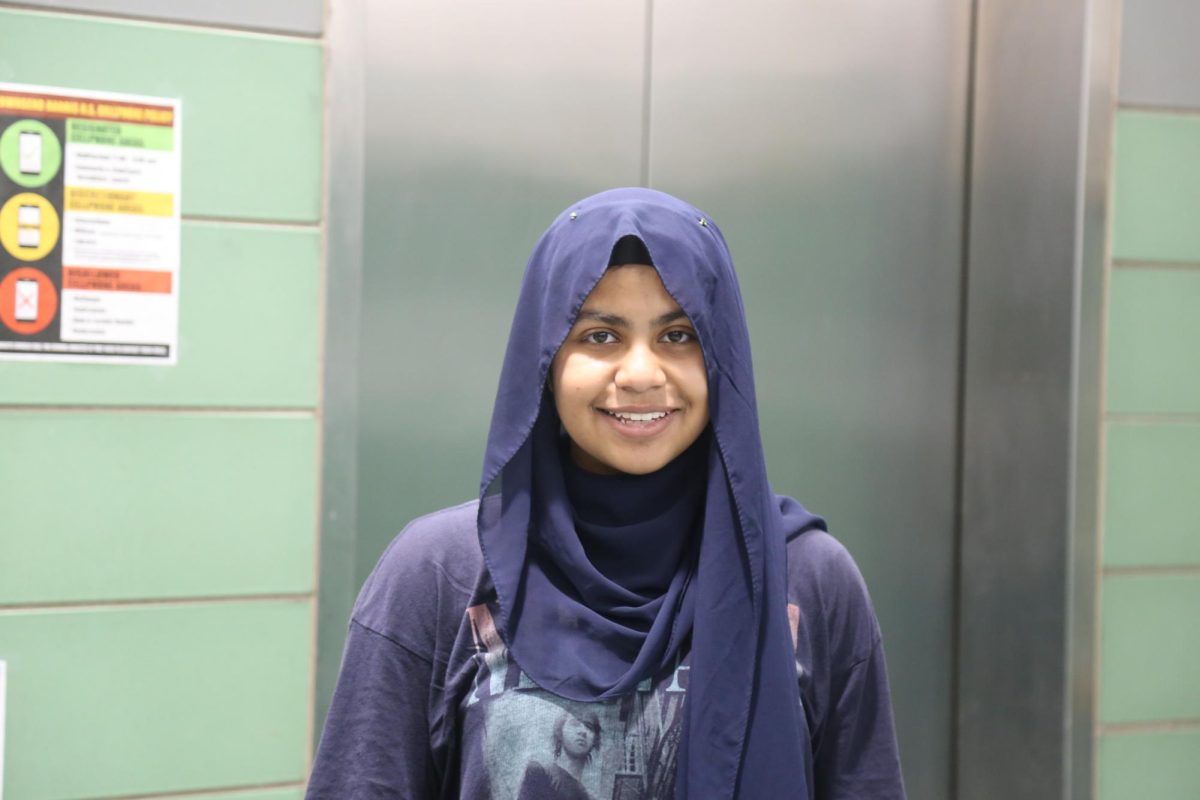
New York City, classically referred to as a ‘melting pot,’ blends cultures from around the world into one area. Townsend Harris High School is filled with students and families from all over the world, displaying their cultural traditional clothing, especially in the school’s Festival of Nations each year.
Sophomore Marisha Liliah embraces her Hindu heritage through garments such as sarees, lehengas, and salwars. These outfits differ in style, but all symbolize the beauty of her East Indian cultural in the intricate embellishments. The saree is likely the most well-known piece of Indian clothing for girls. Marisha says the garment “consists of a top that varies in size, most of them exposing the stomach. The bottom [is] a wrap around material, like a skirt, once you almost reach the end of wrapping the material around, you then place it on the shoulder like a shawl.
In addition to the saree, senior Nadia Khan explains, “Young girls wear lehengas or salwars more often [than the saree].” She adds, “A salwar kameez has a long top that typically reaches around the knees but can vary in length and pants that can be skin tight or baggy, depending on style. Lehengas have a blouse and a floor length skirt.”
Marisha explains, “men [typically] wear pants and long sleeved shirts [that extend to] the length of their knees,”. This resembles the salwar, Nadia concludes. These outfits are most likely to be worn at weddings or parties but are even seen in everyday life. Nadia describes the main difference to be “the complexity of the embroidery or the amount of jewelry.”
Freshman Kaitlyn Wu describes that in her chinese culture they wear what is called a Qui Pao. Kaitlyn explains that “Qi paos are silk button up shirts [or] dresses that have many different types of colors and designs like flowers” and represent femininity. The men’s clothing consists of pants and a jacket that are also made of silk and have more masculine colors and designs.
Kaitlyn continued saying that in her culture, they wear the Qi Paos on Chinese New Year and at their own weddings. She says, “ Chinese New Year is the biggest Chinese holiday so we dress the fanciest.”
In Polish culture, the traditional outfit worn is called a “krakowianka” costume, worn while dancing the “krakowiak,” the traditional dance of Poland. Sophomore Agata Turula describes the krakowianka, saying that “the girls usually wear red, floral skirts with corset-type tops. The [men] wear black vests with red pants.”
Agata states that, “The clothing doesn’t have a correlation with religion.” However, she is unsure of its symbolism within the culture. She speculates, “maybe the recurring red color symbolizes the blood of the soldiers that died fighting for Poland’s independence.”
Similarly to Polish culture, Brazilian culture also have elaborate costumes worn in dance. According to senior Yuriy Markovetskiy, during its famous street parade Carnival, the streets are enriched with costumes. Such as “colorful and creative carnival bikinis worn by women as they dance fluidly through the streets … [with] elaborate detail to…make them look like Samba dancers.”
Besides during Carnival, Brazilians also have other outfits worn in different places and for different events. Yuriy explains that “In southern Brazil there are Gauchos which kind of resemble American Cowboys [and] in Rio De Janeiro, clothing can be compared to that of England, Africa, and Portugal.” Overall, “the clothing in Brazil is mostly based on the region, climate, and event,” Yuriy states.



























